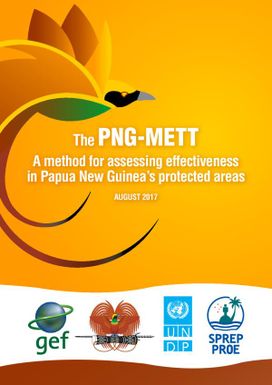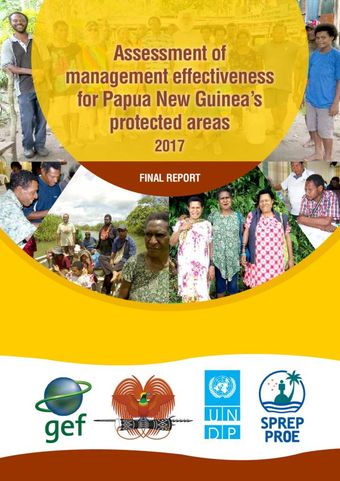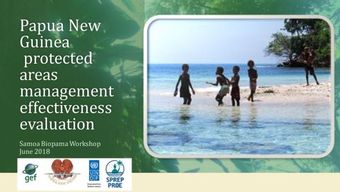The PNG-METT : A method for assessing effectiveness in Papua New Guinea's protected areas
- Description:
- In 20152016, the Government of Papua New Guinea (PNG), through its Conservation and Environmental Protection Authority (CEPA) and with the support of United Nations Development Program (UNDP), organised an evaluation of its protected areas, as part of the process to improve management effectiveness. PNGs Policy on Protected Areas commits to regular evaluation of management effectiveness and to taking remedial action to improve effectiveness over time. Management effectiveness of Protected Areas will be regularly evaluated on a national basis, and improvements will be put into place based on assessment results. Where Protected Area effectiveness or wildlife populations and health are shown to be declining or at risk, causes will be investigated and corrective measures rapidly implemented (Independent State of Papua New Guinea, 2014, p. 50). This effort is a component of the third pillar supporting the vision for the protected area network in PNG: effective and adaptive biodiversity management
- Display date:
- 2017
- Collections:
- Secretariat of the Pacific Regional Environment Programme (SPREP)
- Publisher:
- Secretariat of the Pacific Regional Environment Programme (SPREP)
- Content partner:
- Secretariat of the Pacific Regional Environment Programme (SPREP)
- Availability:
- Not specified
-
Copyright status: All rights reservedFind out more about what you are able to do with this itemThis item is all rights reserved, with means you'll have to get permission from Secretariat of the Pacific Regional Environment Programme (SPREP) before using it. For more information, please see our use and reuse page.What can I do with this item?Non-infringing useNZ copyright law does not prevent every use of a copyright work, and this item may be hosted by an international institute or organisation. You should consider what you can and cannot do with a copyright work.No sharingYou may not copy and/or share this item with others without further permission. This includes posting it on your blog, using it in a presentation, or any other public use.No modifyingYou are not allowed to adapt or remix this item into any other works.No commercial useYou may not use this item commercially.
Related items
Welcome and warm Pasifik greetings
The information on this site has been gathered from our content partners.
The names, terms, and labels that we present on the site may contain images or voices of deceased persons and may also reflect the bias, norms, and perspective of the period of time in which they were created. We accept that these may not be appropriate today.
If you have any concerns or questions about an item, please contact us.


